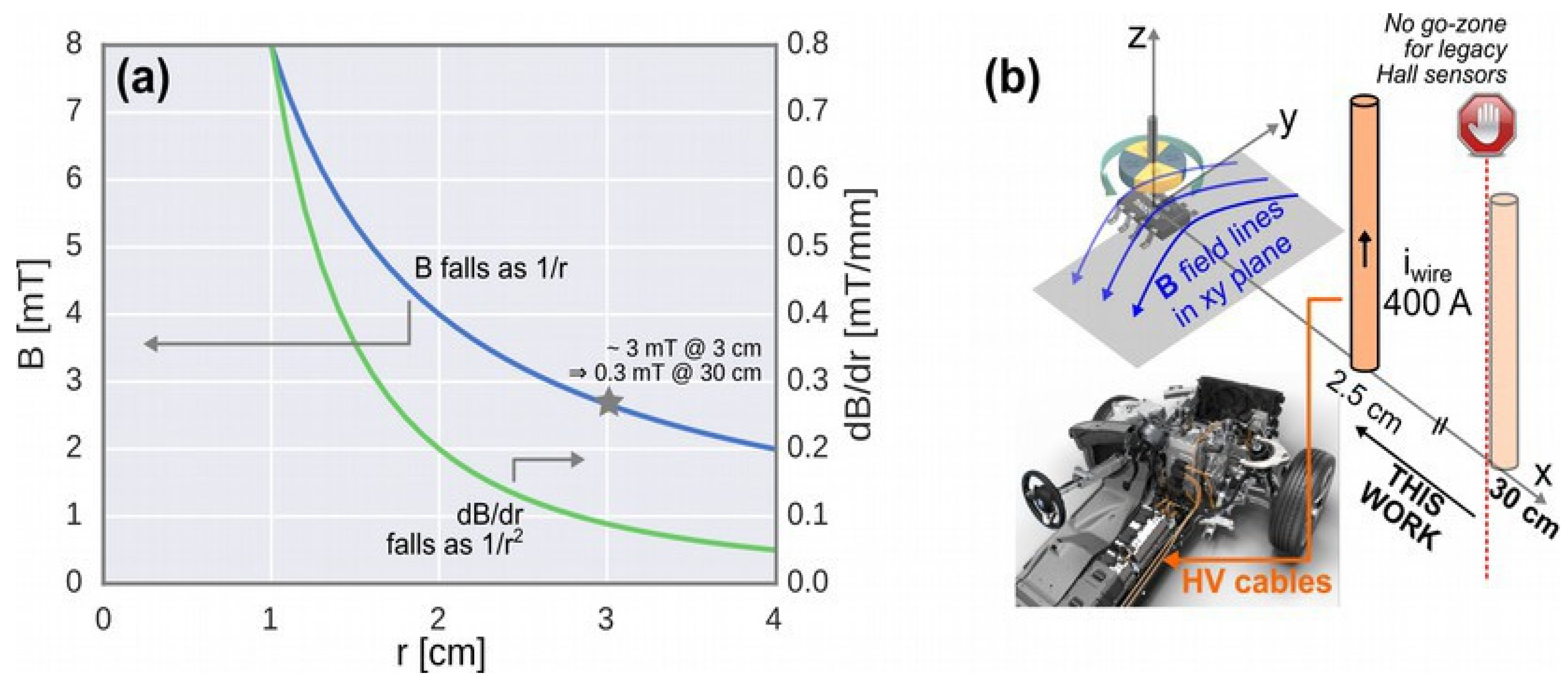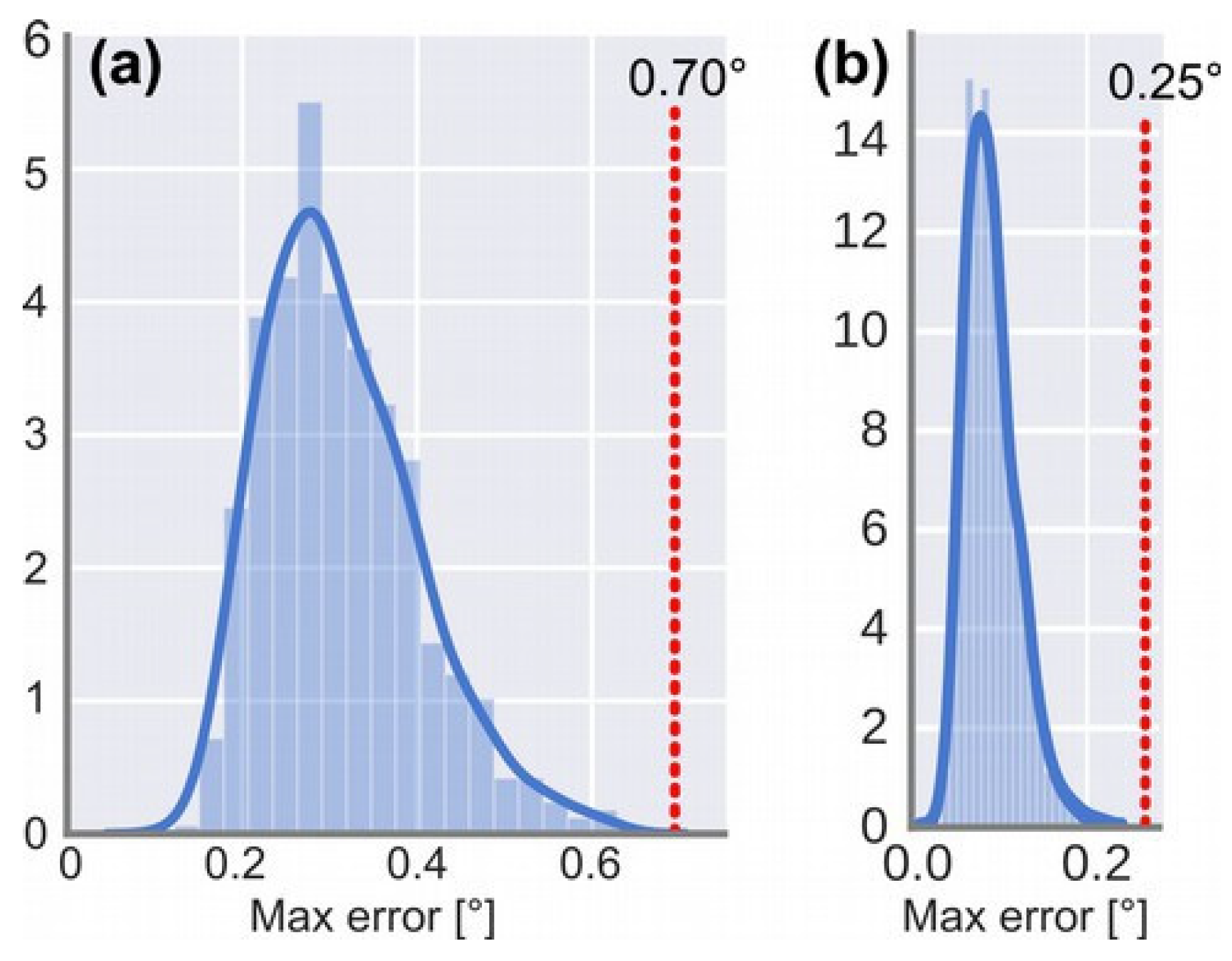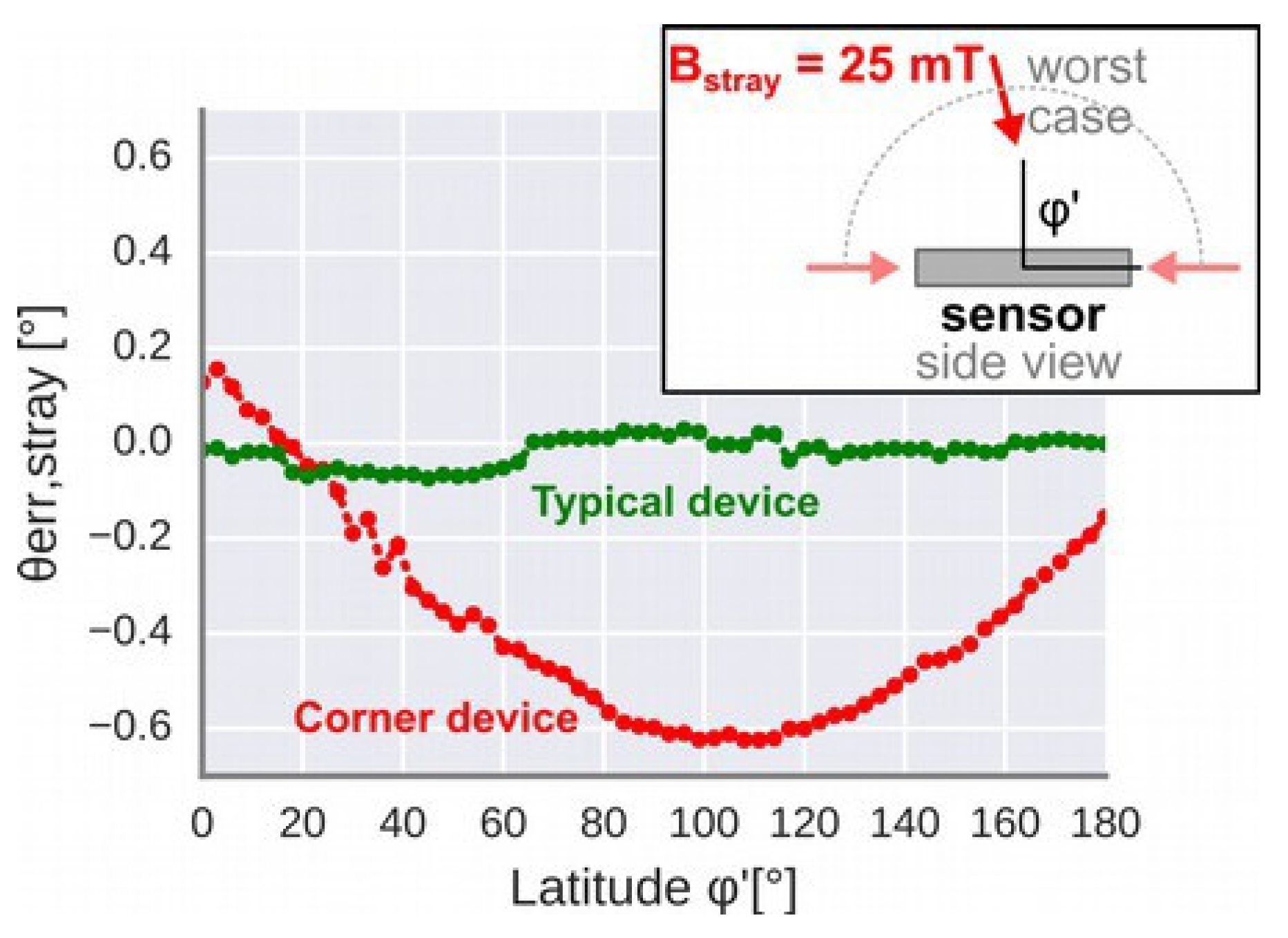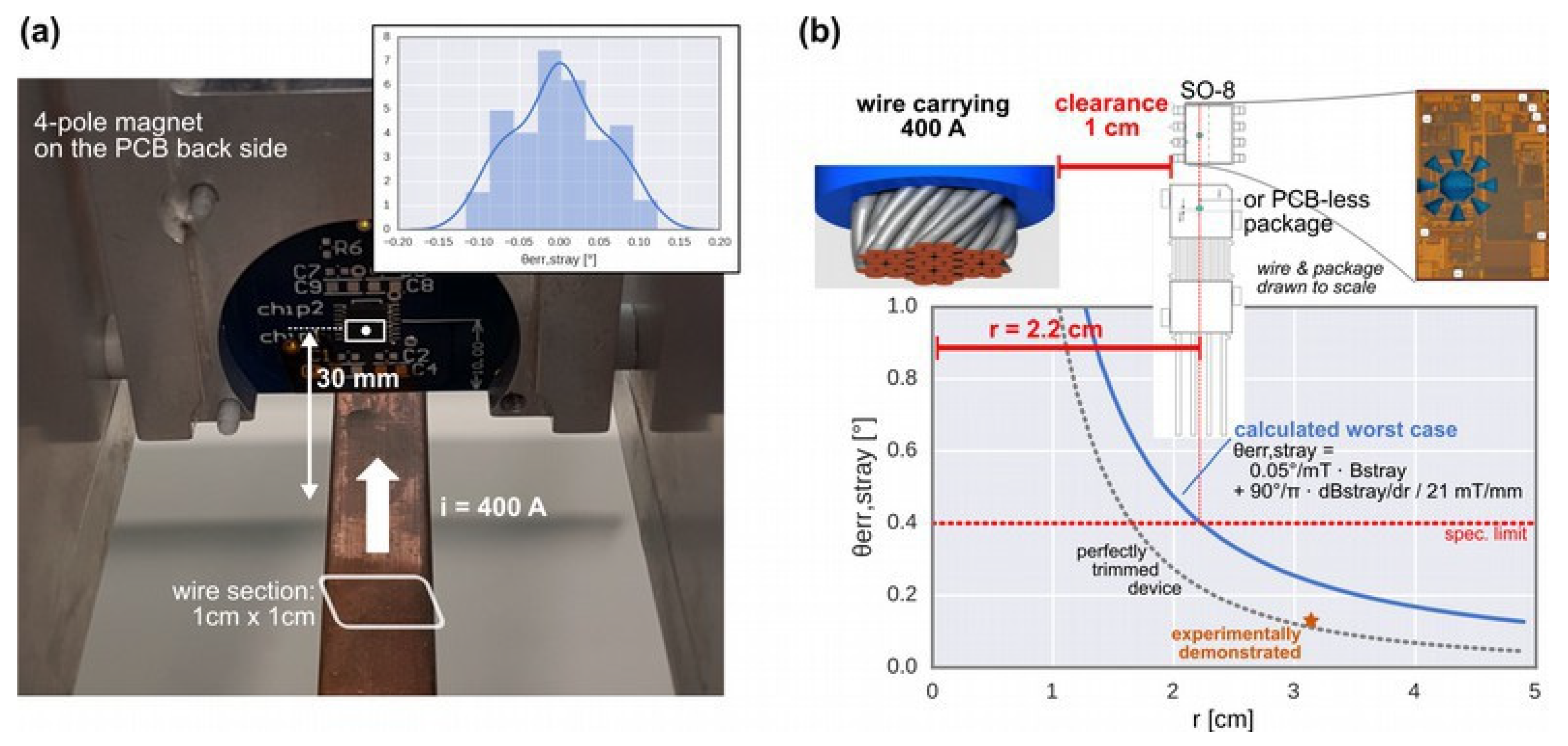Experimental Demonstration of Stray-Field Immunity beyond 5 mT for an Automotive-Grade Rotary Position Sensor †
Abstract
:1. Introduction
2. Materials and Methods
3. Results
3.1. Impact of Uniform Stray Fields
3.2. Impact of Current-Carrying Wire
4. Conclusions
Conflicts of Interest
References
- Karabetsos, E.; Kalampaliki, E.; Tsanidis, G.; Koutounidis, D.; Skamnakis, N.; Kyritsi, T.; Yalofas, A. EMF measurements in hybrid technology cars. In Proceedings of the 6th International Workshop on Biological Effects of Electromagnetic Fields, Bodrum, Turkey, 10–14 October 2010. [Google Scholar]
- Granig, W.; Hartmann, S.; Köppl, B. Performance and Technology Comparison of GMR Versus Commonly used Angle Sensor Principles for Automotive Applications. SAE Tech. Pap. 2007. [Google Scholar] [CrossRef]
- Huber, S.; Burssens, J.-W.; Dupré, N.; Dubrulle, O.; Bidaux, Y.; Close, G.; Schott, C. A Gradiometric Magnetic Sensor System for Stray-Field-Immune Rotary Position Sensing in Harsh Environment. Proceedings 2018, 2, 809. [Google Scholar] [CrossRef]
- Leroy, S.; Rigert, S.; Laville, A.; Ajbl, A.; Close, G.F. Integrated Hall-Based Magnetic Platform for Position Sensing. In Proceedings of the ESSCIRC 2017—43rd IEEE European Solid State Circuits Conference, Leuven, Belgium, 11–14 September 2017; pp. 360–363. [Google Scholar]
- AMS. AS5171: High-Resolution On-Axis Magnetic Angular Position Sensor. Datasheet. June 2016. Available online: https://ams.com/as5171 (accessed on 8 October 2017).
- IDT. ZMID520xMROT36001 Rotary Application Module User Manual. December 2017. Available online: https://www.idt.com/document/man/zmid520xmrot36001-application-module-user-manual (accessed on 10 February 2018).




Publisher’s Note: MDPI stays neutral with regard to jurisdictional claims in published maps and institutional affiliations. |
© 2018 by the authors. Licensee MDPI, Basel, Switzerland. This article is an open access article distributed under the terms and conditions of the Creative Commons Attribution (CC BY) license (https://creativecommons.org/licenses/by/4.0/).
Share and Cite
Dupré, N.; Dubrulle, O.; Huber, S.; Burssens, J.-W.; Schott, C.; Close, G. Experimental Demonstration of Stray-Field Immunity beyond 5 mT for an Automotive-Grade Rotary Position Sensor. Proceedings 2018, 2, 763. https://doi.org/10.3390/proceedings2130763
Dupré N, Dubrulle O, Huber S, Burssens J-W, Schott C, Close G. Experimental Demonstration of Stray-Field Immunity beyond 5 mT for an Automotive-Grade Rotary Position Sensor. Proceedings. 2018; 2(13):763. https://doi.org/10.3390/proceedings2130763
Chicago/Turabian StyleDupré, Nicolas, Olivier Dubrulle, Samuel Huber, Jan-Willem Burssens, Christian Schott, and Gael Close. 2018. "Experimental Demonstration of Stray-Field Immunity beyond 5 mT for an Automotive-Grade Rotary Position Sensor" Proceedings 2, no. 13: 763. https://doi.org/10.3390/proceedings2130763
APA StyleDupré, N., Dubrulle, O., Huber, S., Burssens, J.-W., Schott, C., & Close, G. (2018). Experimental Demonstration of Stray-Field Immunity beyond 5 mT for an Automotive-Grade Rotary Position Sensor. Proceedings, 2(13), 763. https://doi.org/10.3390/proceedings2130763





